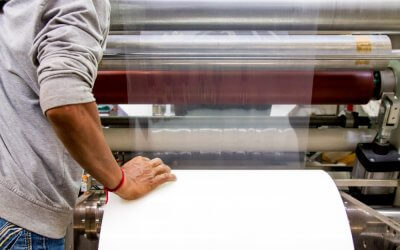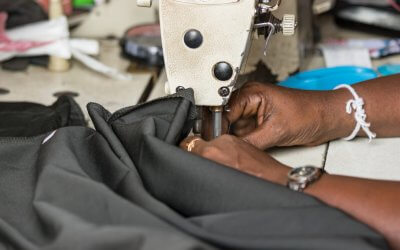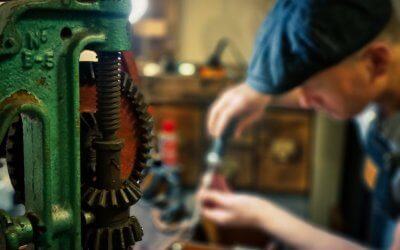OEM and ODM are two acronyms you probably have come across as an importer. And chances are, right where you are; you are within arm’s reach of several OEM and ODM products.
But what exactly is the difference between an Original Equipment Manufacturer (OEM) and an Original Design Manufacturer (ODM)? And what are the advantages and disadvantages of these approaches to manufacturing?
Having an in-depth understanding of these business models is an important step to choosing the right supplier, and this article covers everything you need to know.
Table of Contents
What is ODM?
Original Design Manufacturing, also known as private labeling, is a form of contract manufacturing. ODM simply means that a factory will make products for you based on their already-existing product design.
These factories typically allow you to make minor modifications to their design like product size, packaging, and branding. As such, you’re allowed to sell the products under your own brand name.
So let’s say you’re looking to import low-priced scooters from China. You might have come up with some features you want your scooters to have, but you don’t want to go through the tedious engineering design process. You just want scooters that meet your requirements.
For this, you might want to contact an ODM that has its own product lines. They typically will present you with several scooter designs from their factory catalog and allow you to customize their existing designs. Some will even help you to create new designs based on the ideas you provide.
What is OEM?
Original Equipment Manufacturing is another form of contract manufacturing. However, unlike ODM, an OEM factory manufactures products based on your unique design and specifications. (Related Post: Going From Product Design to Store Shelves: A Timeline)
A famous example of an OEM would be Foxconn — Apple’s main iPhone manufacturer. While Apple handles the research and development of the iPhone, Foxconn owns most of the factories that make them.
Now let’s discuss the pros and cons of these manufacturing approaches.
ODM: Advantages and Disadvantages
Advantages
- You don’t need to make large upfront investments for R&D and setting up a custom production line. Since the ODM handles the product development process, you can focus more on marketing your products.
- You will benefit from the skills and experience of the ODM, especially if you have little to no knowledge about manufacturing.
- You can save a lot of money even if you are purchasing low volumes of products. This is because ODMs usually produce significant quantities to sell in smaller lots.
Despite the many advantages associated with ODM sourcing, there are also a few drawbacks.
Disadvantages
- Since many ODM factories manufacture products according to the same design, it is highly likely that your product appears similar to that of your competitors.
- You don’t get the protection of intellectual property, so there’s a chance that you find yourself in a contractual disagreement with the ODM.
OEM: Advantages and Disadvantages
Advantages
- You retain total control over the design of your product and intellectual property. This means you have a better bargaining position and can easily switch to other suppliers.
- It is easy to get quotes from manufacturers since you have a detailed design, specifications, and a bill of materials (BOM) for your product.
Disadvantages
- The product development time for OEM is usually longer than ODM. You might have to wait for up to 8 months before your product is ready, whereas product development time for ODM ranges from 1 week to 4 weeks.
- it is resource-intensive and can take you years to create unique products.
- You cannot rely on OEMs to troubleshoot or detect faults in your design. They manufacture products based solely on the design data you provide.
How do you work with your ODM or OEM?
Trusting another company with your product is hard, especially if you plan on sourcing products from China. There have been numerous horror stories of consumer product importers who received non-compliant or low-quality products after collaborating with suppliers based abroad.
Therefore, it is important to put extra effort into quality control when doing business with OEMs and ODMs. You can ensure product quality and compliance by conducting third-party inspections through a reliable service provider. At Insight, we provide on-site product inspections in 16 different countries to help you manage your product quality.
If you are planning to work with a new factory and want to learn more about how to assess their capabilities, we recommend downloading the following guide.
Free Guide
How to Prepare for a Factory Audit
A factory audit helps you assess a supplier's systems, capacity, workplace environment, or capabilities to ensure they meet your requirements as a buyer.
But which type of audit should you conduct, and which points should you cover on your checklist? In this free guide, you'll learn how to run an effective supplier assessment.





Can we consider OEM and ODM products genuine or authentic?
OEM can be considered a service while ODM is a product. I’d consider products to be manufactured by both an OEM or a ODM supplier can be authentic and/or genuine. It would really depend on the context that is the reason behind your question.
Hi there, was trying to dowload your White Paper on sourcing, apparently it is no longer available – Is it possible I can still get it?
Thank you for your interest. We have sent you an email.
A highly appreciable information for those who want learn from a authentic source .
Good information, thank you.